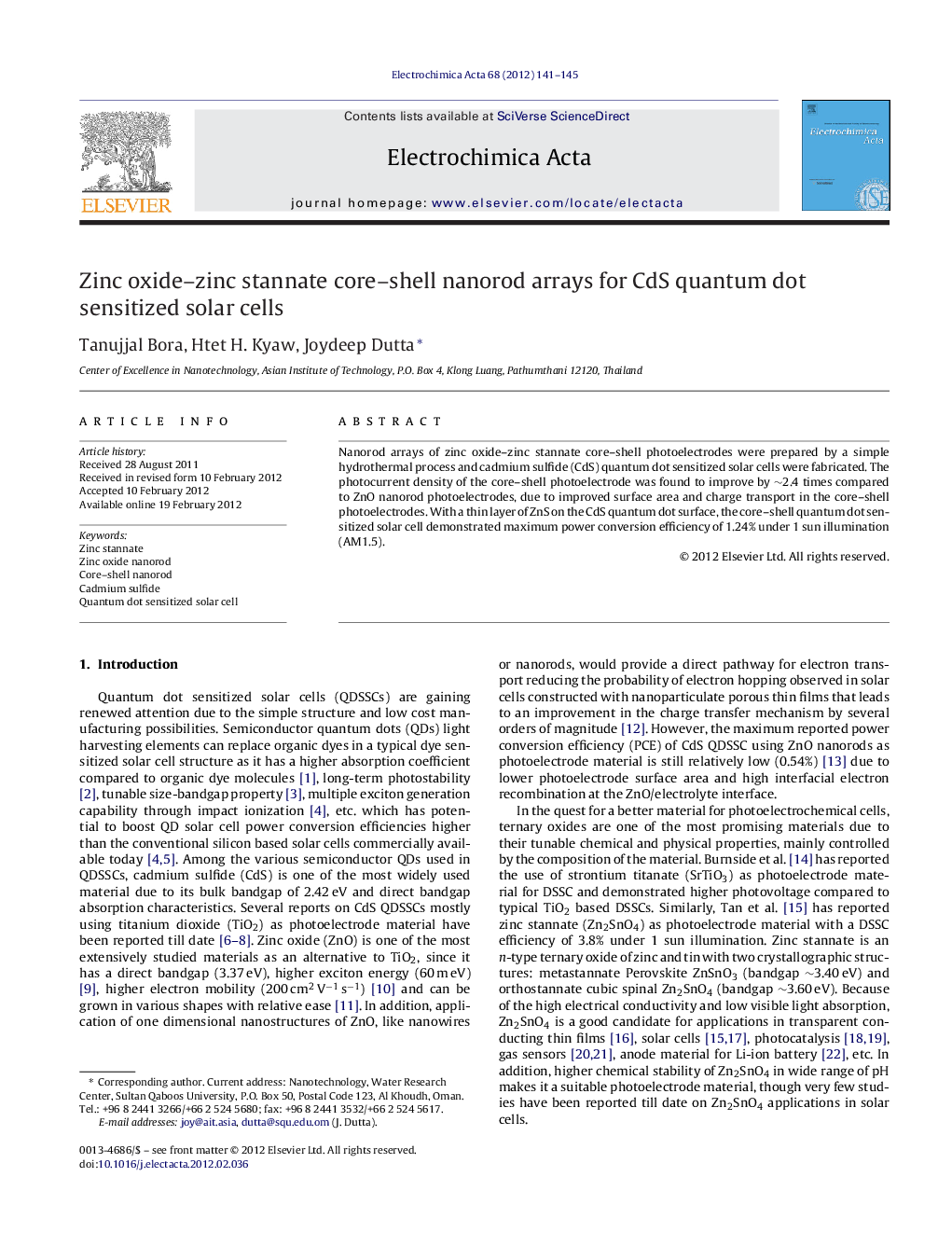| Article ID | Journal | Published Year | Pages | File Type |
|---|---|---|---|---|
| 188695 | Electrochimica Acta | 2012 | 5 Pages |
Nanorod arrays of zinc oxide–zinc stannate core–shell photoelectrodes were prepared by a simple hydrothermal process and cadmium sulfide (CdS) quantum dot sensitized solar cells were fabricated. The photocurrent density of the core–shell photoelectrode was found to improve by ∼2.4 times compared to ZnO nanorod photoelectrodes, due to improved surface area and charge transport in the core–shell photoelectrodes. With a thin layer of ZnS on the CdS quantum dot surface, the core–shell quantum dot sensitized solar cell demonstrated maximum power conversion efficiency of 1.24% under 1 sun illumination (AM1.5).
► Use of ZnO–Zn2SnO4 core–shell nanorod arrays for CdS quantum dot sensitized solar cells has been reported here. ► The ZnO–Zn2SnO4 core–shell nanorod arrays were prepared by a simple two step hydrothermal process. ► Due to the high surface area and improved charge separation, the core–shell CdS QDSSC demonstrated high photocurrent and photovoltage. ► A maximum power conversion efficiency of 1.24% was achieved for the ZnO–Zn2SnO4 core–shell CdS QDSSC.
